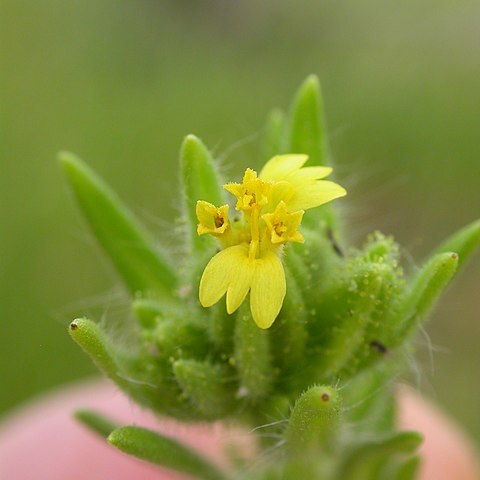More slender than no. 1 [Madia sativa Molina], 1–5 dm, with shorter, generally more appressed pubescence, scarcely or not at all glandular below the infl; lvs linear or lance-linear, 2–7 cm × 1–4 mm; heads smaller and relatively narrower, 2–5 mm wide; rays mostly 1–2, or wanting from some heads, 2 mm; 2n=28. Open places; cordilleran region, occasionally intr. along our w. border. July–Sept.
A herb.

